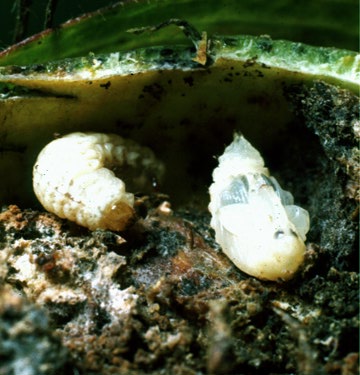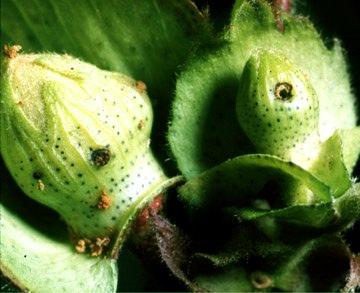
A common name for an insect that infests cotton plants is the boll weevil. The adult boll weevils are reddish-brown, gray, or almost black in color and are normally less than 0.24 inches long. In addition, the adult has a long snout and two spurs on the first joint. When adult boll weevils emerge in the fall, they hibernate in grass, older bolls, or near cotton gins in the seed. Usually, they will reappear in the spring. Here's a picture of an adult boll weevil:

The primary food source for the boll weevil is the cotton plant. In early spring, boll weevils puncture the cotton buds and bolls in order to lay their eggs in them. It takes approximately 3 - 5 days for the eggs to hatch into larvae. Boll weevils live approximately 3 weeks, so many generations can breed in one season. Most of the damage comes from the boll weevil larvae. They live on the innermost tissues of the cotton buds and bolls. Here's a picture of a boll weevil larva and pupa:

In the early 1890s, the Mexican boll weevil crossed into the United States and entered Texas. It crossed the Rio Grande to Brownsville, Texas. From here, it moved at a rate of approximately 70 miles per year. It headed toward the South and excessively damaged the fields it crossed. Here's a picture of a cotton boll damaged by a boll weevil:

The boll weevil is classified as Anthonomus grandis and belongs to the Curculiondae family of insects.